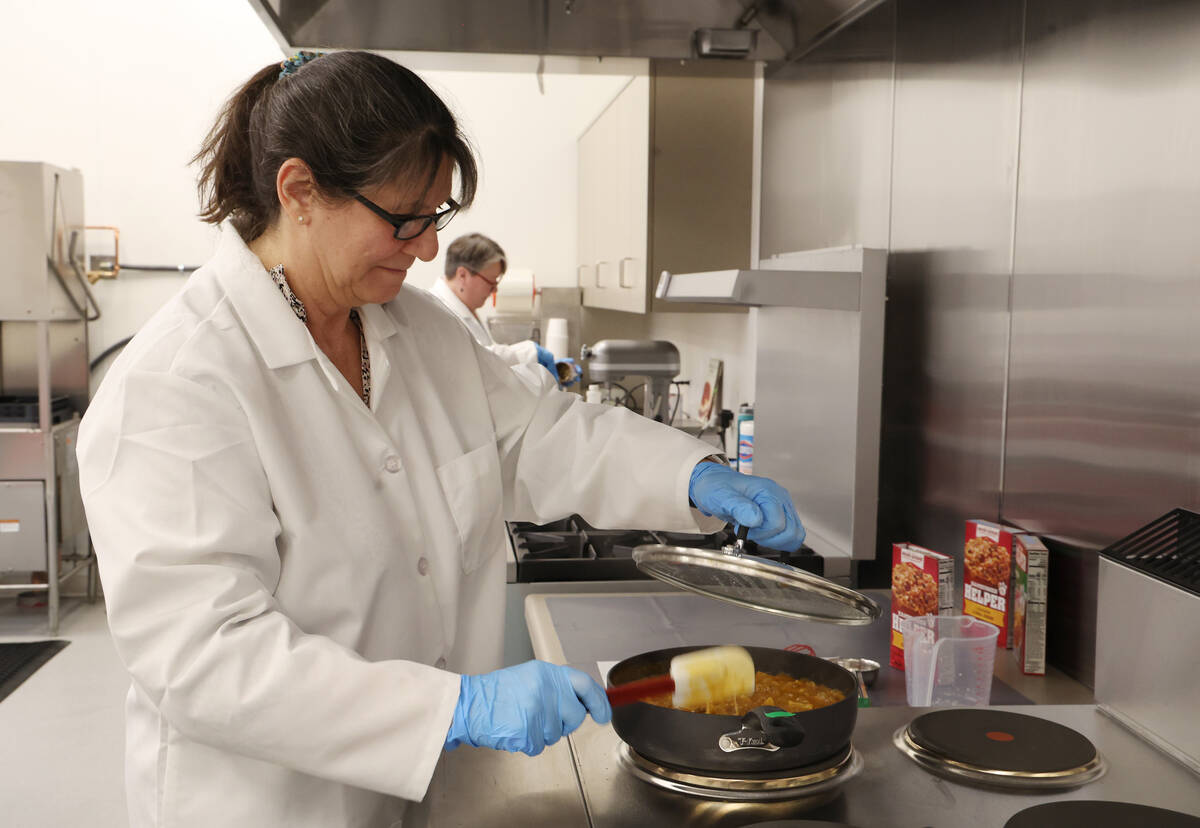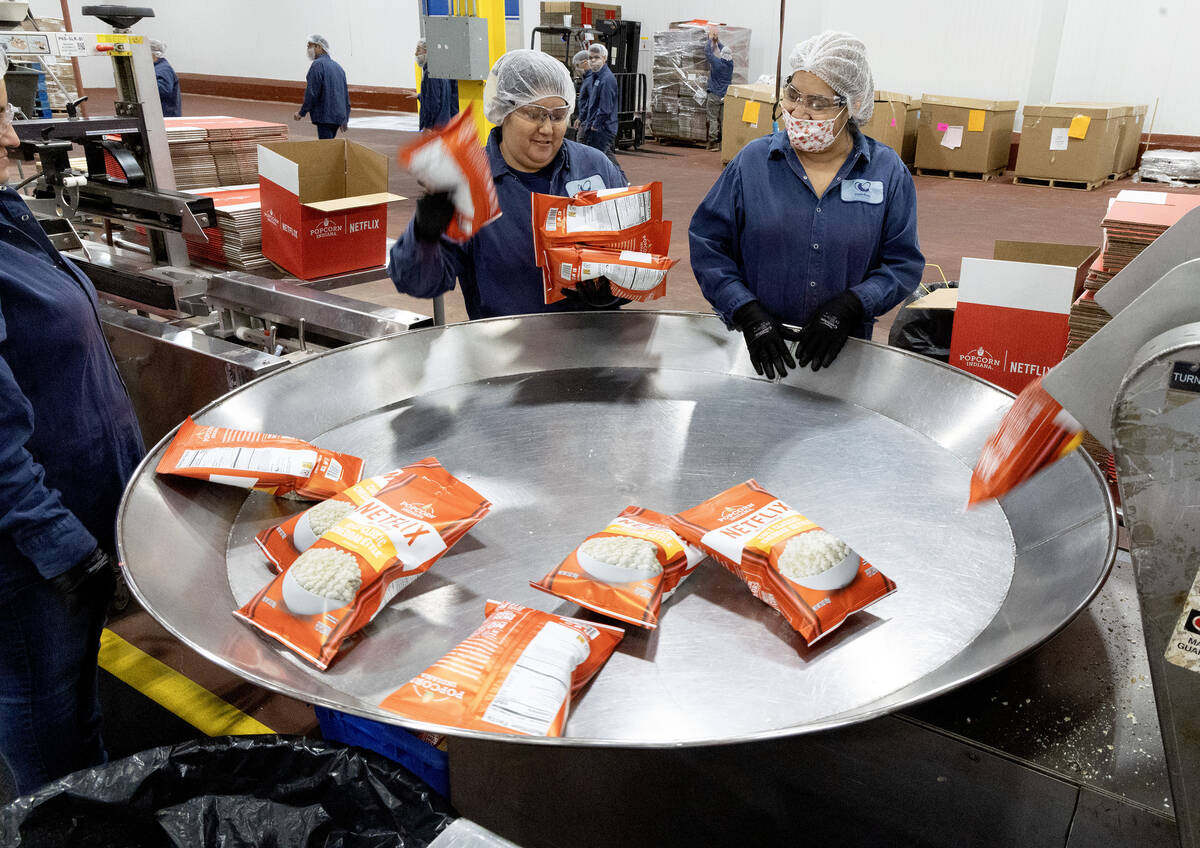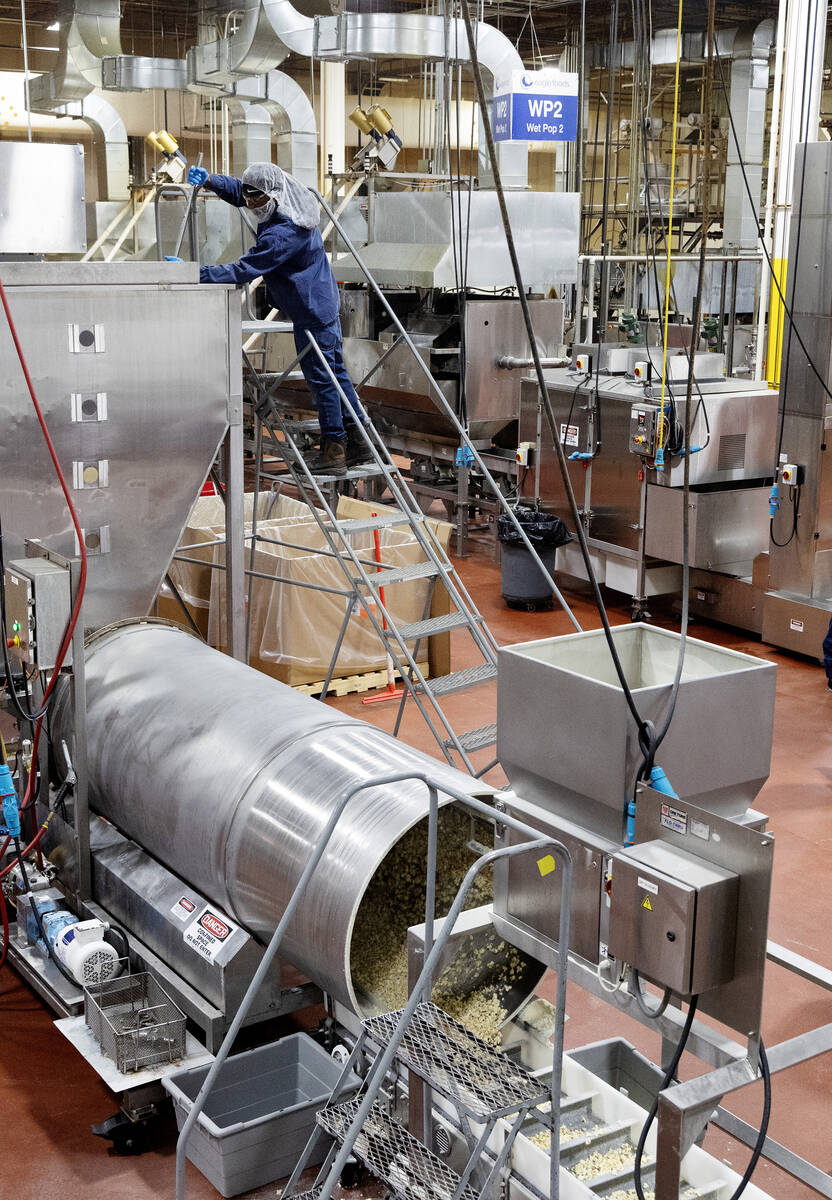Hamburger Helper looks to stay relevant with help of innovation center
For the busy parent, the uninspired home cook or simply anyone looking to get dinner on the table, a trip through the packaged foods aisle at the grocery store is an easy solve.
Take Hamburger Helper, a store shelf mainstay since the ’70s that offers a one-pan solution to mealtime. For decades, the brand was a household name. In an effort to stay relevant with today’s consumer, Helper has reintroduced itself to the market with the help of its new parent company.
Eagle Foods is a Cleveland-based company nearly 10 years old with brands that have an “incredibly rich history rooted in American culture,” said Mala Wiedemann, executive vice president of marketing and research and development. The company acquired Helper and pasta salad starter kit Suddenly Salad from General Mills in 2022 via a cash sale valued at around $610 million, according to a General Mills news release. At the time, annual sales for both products were $235 million in fiscal year 2021, a marked decline from Helper’s heyday.
Now, Eagle Foods is looking to refresh the brands, opening a 15,000-square-foot innovation center in February in north suburban Buffalo Grove, Illinois, with about 25 people. The multimillion-dollar investment is an effort to keep the products relevant after a resurgence in packaged foods during the COVID-19 pandemic and comes at a time when consumers have seen grocery prices soar. The space will in part be used to welcome focus groups to test out new flavors and product ideas.
Earlier this year, Helper relaunched with the help of Lefty, the talking gloved hand with a red nose, starring in a national ad campaign introducing new packaging and faster cooking times. Mark Dollins, a spokesperson for Eagle Foods, said the average box of Helper is around $2 with the exact price varying by retailer. The price hasn’t changed since the brand was under General Mills, Dollins said, which keeps Helper’s reputation for affordability despite rising grocery prices.
The cost of groceries peaked at an annual inflation rate of 13.5% in August 2022, according to the consumer price index, just one month after Eagle completed its purchase of Hamburger Helper from General Mills. While inflation has since cooled significantly in the post-pandemic economy, grocery prices were up 1% year-over-year in February, according to the latest CPI data.
“To really revitalize a brand, it takes investment,” Wiedemann said. “Investment of time and resources. We believe in quality products, so we’re willing to put money back in the box and not charge for it.”
With more than 30 iterations, Helper’s new packaging aims to make it easier for consumers to see what they’re getting and to find the flavor they’re looking for when scanning the shelves with bigger and bolder messaging on the box.
The new packagings with the reformulation of some popular flavors like cheeseburger macaroni and lasagna have been rolling out since the new year, with roughly 60% of product already on shelves, Wiedemann said.
The lasagna Helper’s new recipe includes more cheese, herbs and tomatoes to “bring home the more traditional lasagna flavor,” said Melissa Jaeger, product development manager at Eagle Foods. The cooking time also changed from 10 minutes to seven minutes, which Jaeger said yielded a better texture for the noodles.
Claire Sand, a member of the food packaging division of Chicago-based group Institute of Food Technologists, said consumers want to see “what they’re actually eating,” so companies using fresh ingredients in their packaged meals helps.
“Even with these prepared foods, if you see some dried herbs, onions, garlic in there, it looks fresh, so you can really discern the difference,” Sand said.
The manufacturing of packaged foods has changed, Sand said, going through less processing “to protect those ingredients that are fresher.” Packaging has come a long way as well, she added, with improved oxygen and water vapor barriers so that the “fresher, minimally processed food gets to consumers better.”
When Helper first debuted nationally in 1971 with five flavors, it was “an instant success,” according to a 2017 Helper history feature by General Mills, as about 27% of U.S. households purchased the product in its first year. This was at a time when beef prices in the U.S. were climbing and the economy was hurting. Families found Helper an affordable way to stretch a pound of beef into a dinner for five.
As its popularity soared, General Mills added Tuna Helper in 1972 and Chicken Helper in 1984, lining many kitchen cabinets with a weekly menu of boxed dinnertime meals.
The brand introduced its mascot, Lefty, in 1977 to help boost sales after a slump.
As of 2017, Helper came in 41 varieties including Asian, Italian and Mexican meals, and more than 1 million households were having Helper for dinner each weeknight, according to General Mills.
Helper became a profit center for General Mills for decades, accounting for 70% of dry dinner mix sales in 1996. However, increased competition and changing tastes began to steadily erode its market share and sales in the new millennium.
In 2014, Hamburger Helper sales were $311.4 million, representing 43.9% of the quick recipe kits market in the U.S., according to leading market research firm Euromonitor. By 2021, its last full year under General Mills, Hamburger Helper sales had fallen to $229.4 million and 20.8% of the category.
Since being purchased by Eagle, Helper’s sales have increased, but its market share remains flat. In 2022, Hamburger Helper generated $248.6 million in U.S. sales, or 19.5% of the quick recipe kits category, according to Euromonitor. Last year, Hamburger Helper sales hit $272.2 million, reaching a 20% market share.
Wiedemann said the growth in sales could be attributed to the company’s investment and partnering with retailers on everything from assortment to promotions to displays of the product. Results thus far have been “encouraging,” she said, and the expectation is that the relaunch of the Helper brand will propel the growth.
Euromonitor defines the quick recipe kits category as packaged foods that require a few steps beyond reheating, generally adding protein or other fresh ingredients. Another example of a product line in the category is the Old El Paso Taco Dinner Kit. Ready-to-heat foods and more complex meal kits are in separate categories.
Helper falls under the “convenient meal solutions” category for Eagle, Wiedemann said, which could also include takeout food or even a frozen pizza. She said this category makes up about two-thirds of meals for Americans.
“When Helper first started, people were spending two to three hours making pot roasts, so Helper was a 30- to 40-minute option,” Wiedemann said. “Over time, the definition of convenience has changed, and now even 30 or 40 minutes to make dinner is considered a long time.”
The reformulations of Helper led to a 15% decrease in cooking time, Wiedemann said. Since the revamped product started hitting shelves in January, the meals can now be made in less than 30 minutes start to finish.
Besides being ready to eat faster, the brand wanted to highlight the cook’s ability to customize the meal. A QR code on the back of a Helper box shows different options for adding proteins and other ingredients, like chicken instead of beef or tossing in veggies or shredded cheese.
According to data from Chicago-based market research firm Circana, dry dinner mixes that get meat added to them have mostly been increasing in popularity. Dollar sales across the U.S. increased by about 20% in 2020 from 2019. Sales decreased by roughly 15% the following year before rebounding.
Data for dry packaged dinner mixes overall showed a 23.6% increase in dollar sales across the U.S. from 2019 to 2020, signaling a greater need for packaged foods during the start of the COVID-19 pandemic.
Sand, who has been working in the packaged foods industry for about 35 years for companies like Kraft Foods, Nestlé and General Mills, said it’s especially important for companies to be agile as food trends evolve.
“The challenge is to continually innovate and almost come up with brands within brands,” Sand said. “You’ve got to be ready and you’ve got to be fast.”
Eagle Foods’ other brands include Cretors Popcorn and Eagle Brand condensed milk. Another one of its brands, Popcorn, Indiana, is newly partnering with Netflix for a line of products to appeal to an audience that is after stream-worthy snacks.
The company started operating a factory in Waukegan in 2004 and employs more than 200 people there, Dollins said. The Waukegan factory is where the company’s ready-to-eat snacks are manufactured. Eagle’s milk products are made in a factory in El Paso, Texas.
Helper and Suddenly are manufactured by co-packers in Illinois and Missouri, which are companies that can package and label products for client companies.
When Eagle wanted to find a spot to anchor the rebuilding of its brands, Buffalo Grove fit the bill.
“We chose Chicagoland for our innovation hub because of the deep history the area has with consumer packaged goods and food development,” Wiedemann said. “It was almost a no-brainer that this was the area to be in.”
Industry giants like Conagra Brands and Kraft Foods are both headquartered in Chicago.
Set to launch in August are Helper microwave cups, a single portion of Helper favorites with real beef, cheese and pasta. The initial rollout is planned with four flavors: cheeseburger mac, beef pasta, chili mac and tomato basil.
Helper’s response to popular microwaveable cups like mac and cheese or instant ramen, Wiedemann said having protein in the cup will add to the experience. The beef is freeze-dried, so it will “come back to life,” she said, once water is added and it rehydrates in the microwave.
The product went through some trial and error, Jaeger said. The team experimented with different cooking times and techniques to perfect the taste. Unlike a more traditional mac and cheese cup, the Helper cup will have one packet inside with all of the ingredients and seasonings, which is opened, poured into the cup and mixed with water before microwaving. Having the seasoning mixed in before heating made for a “better, rounder flavor,” Jaeger said.
Lisa Humphrey, senior scientist for Eagle’s meals division in Buffalo Grove, talked about a recent innovation of hers that led to a new product. She recalled her aunt making a “phenomenal Greek chicken” and wanted to represent the same flavor profile in a product, which led to a Greek-flavored Suddenly Salad that came to market at the end of last year. As spice has maintained a strong hold on the overall food market, Jaeger said the team has tried everything from mild to “the spiciest spice” to try and develop new flavors for Helper, such as jalapeno cheeseburger mac and spicy garlic. Jaeger said some ideas have indeed been unsuccessful, like buffalo ranch, which didn’t land with the team’s tastebuds.
“We’re all foodies for sure,” Jaeger said. “We all love to try new restaurants and food, so we are tapped into the industry and trends that are happening. We try to keep a good pulse on the market so we can develop things that most people will want.”
Understanding what the consumer wants is essential for Eagle Foods as the company looks to strike a balance between legacy and novelty to keep the Helper brand going, Wiedemann said.
“To keep a brand relevant for over 50 years, you have to constantly be understanding the consumer and how needs are changing,” Wiedemann said. “This brand is so iconic, but it still needs to evolve over time so that it continues to be iconic for each generation.”
____
Chicago Tribune’s Robert Channick contributed.




















